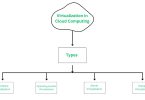E-commerce, is a short form of electronic commerce that has come in the beginning of 1990s. After a few years ago niche market for tech-savvy early adopters has now become famous for consumers around the world. In 2022, global e-commerce sales are increasing speedily and reached it to $4.9 trillion. And now it also growing rapidly.
Many factors that have come up with to the change of e-commerce, by including the rise of broadband internet, the increasing popularity of smartphones, and the changing needs and expectations of consumers.
The Rise of Broadband Internet:
The expansion of broadband internet has been one of the main forces behind the growth of e-commerce. Now a days consumers use dial-up connections for e-commerce, by which online buying slow and annoying. By more accessible of internet Online shopping improved in terms of convenience.
The Growth of Mobile Commerce:
Growth of e-commerce is the growth of mobile commerce. Last year’s smartphones have become all over the place and consumers use their mobile devices to shop online widely. E-commerce sales are expected by mobile phones reach $3.5 trillion in 2022, which represents that it take big part of the global e-commerce market.
Changing Consumer Needs and Expectations:
As the advancement of technology , the natural selection of e-commerce has also been mould by the changing of expectations and needs of consumers. Few years ago, when consumers think online shopping is very easy by browsing online catalogs and place orders over the phone. And consumers were very happy by this techniques. Now consumers have very high demands. They want to be able to shop online quickly and easily, and they want to be able to do so from any device. They also want a seamless shopping experience, with clear and concise information about products and services, and secure payment options.
The Future of E-Commerce:
The advancement of e-commerce is still in its early stages, and market is still growing quickly. In the coming years, we can look ahead to see even more revolution in the e-commerce space, as distributor continue to find new ways to meet the needs and assumptions of consumers.
Some of the key trends that are likely to shape the future of e-commerce include:
- The continued growth of mobile commerce.
- The rise of social commerce.
- The increasing importance of personalization and customization.
- The growth of omnichannel retailing.
- The adoption of new technologies, such as augmented reality and artificial intelligence.
Conclusion:
The development of e-commerce has been a expectational journey. In 1990s as its beginning to its current status as a major force in the global economy, e-commerce has changed the way we shop and do business. In the coming years, we can hope for to see even more changes are in the e-commerce space, as distributors continue to find new ways to meet the needs and expectations of consumers.






Leave a Comment